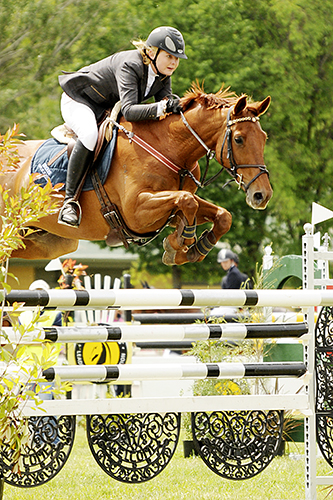 Story by Shannan Makauskas and photos by Alex Makauskas and Julie Wilson
Story by Shannan Makauskas and photos by Alex Makauskas and Julie Wilson
Showjumping in Australia is one discipline with a seemingly bottomless pool of talent in the young rider and junior ranks, so making a spot on the National Youth Development Squad is truly an honour. Ten selection competitions are run from August to February, giving riders the opportunity to post their best two rounds. At the end of the series, the top eight competitors are guaranteed a spot on the squad.
The courses used for each of the two rounds are built off a design by a leading course designer, so the competitions are standardized from State to State allowing competitors around Australia to see how they compare with their counterparts on the other side of the country.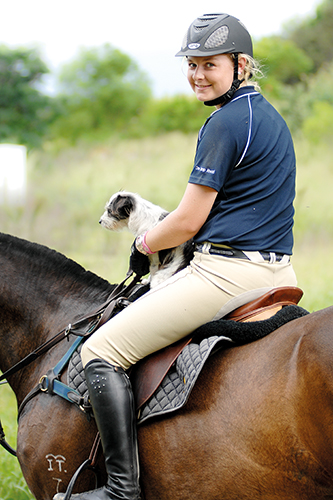
Interestingly the leaders came from the first two rounds of the series, it was the two Queenslanders who finished the 2010/11 selection series with zero faults – Lincoln Glasby riding Le Pop Top, and Gemma Creighton riding Glenhaven Footloose. It then came down to time, and Gemma had the one and a half second advantage over Lincoln in their final round. Gemma was stoked with the win:
“It was so exciting and I was really happy with how my horse performed. It means so much to have a series like that with such great prizes because it gives riders motivation to move forward and really push ourselves. We would have nothing if it weren’t for the sponsors, so I would really like to thank them for giving us the opportunity.”
At 17 years of age, it’s Gemma’s first year on the National Youth Development Squad, but she’s been taking out junior and young rider titles for as long as she can remember. As the daughter of former Olympian, Guy Creighton, Gemma grew up touring the Australian showjumping circuit:
“I started riding from the word go, Dad would sit me up in front of the saddle with him. Showjumping has always been my passion, it’s what my Dad did and it’s what I grew up doing, we travelled to shows all year round.”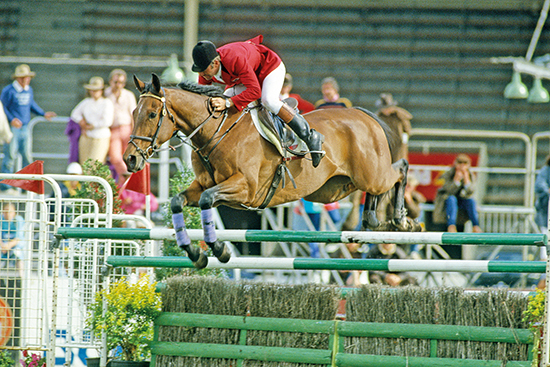
Guy Creighton and Stretch
Gemma’s Mum Lena, certainly remembers her early competition days: “We tried to get Gemma to do the rider classes when she was too little to do anything else, but she would always be running off to jump over the practice fences, she’d get bored and be watching something else in the middle of a class, it was just hopeless.”
Flatwork was never enough of a thrill for Gemma: “I love the adrenalin rush of showjumping, plus it’s what I grew up with and what I know. Besides that, I like that it’s not judged on who you are or how you look, it’s based solely on your performance.”
This fierce love of showjumping can be traced back to her father, Guy, who was known to hitchhike his way to competitions. Although he was away teaching when I visited the Creighton’s property in Helidon, Queensland, his wife Lena told me how he got started:
“He had one trunk and a couple of horses and he’d wait at the sale yards until someone with a truck would pick him up, then they’d drop him at the next sale yard and he’d wait for another ride from there. He did it because he was just that keen to do it, he must’ve been only 16 or 17. Then his father gave him an old truck and a couple hundred dollars and said, ‘Go and do shows and get it out of your system. When you run out of money, come home and start working on the property.’”
Guy never came home, he made a living out of it instead, and went on to win several Australian Championships and represent his country at the Olympics in 1976 and 1984, a feat Gemma aspires to: “Ultimately, that’s what I’d like to achieve, to represent my country at Olympic level.”
If all goes to plan, Guy and Lena will get her there: “I’ve only ever been trained by my parents, I’ve been to the odd squad clinic, but Mum and Dad have helped me from the beginning. Watching Dad jump all through my younger years definitely inspired me and he’s coached me through every event, the big ones and the small ones, along with Mum, they’ve both been on the sidelines through all my success.”
Lena started off grooming for Guy and eventually did all the flatwork training on his horses: “I used to ride and exercise his horses for him, but once I had children I gave it all away. I’ve learnt everything I know from Guy and so has Gemma.”
It can be difficult being coached by your parents, but Gemma knows better than to challenge Guy: “We never really butt heads because I figured after winning all those competitions and riding at the Olympics he must know what he’s talking about.”
Gemma talked about his teaching style: “He has a very calm but direct approach to teaching, and he knows how different each horse on your team can be, so he helps me with whatever each horse needs. We’ve always got along well and I love learning from him.”
There must be something in their blood, because when you try to track down a coach who influenced their riding technique, it more or less comes down to learning on the job. Lena said: “Guy’s always had a knack for riding hot horses, and I think Gemma has that too. Some people have a hot seat, they just seem to get horses really hot, and some people don’t. Whether it’s because they relax more, and leave the horses alone, I don’t know, but something about Gemma gets them relaxed.”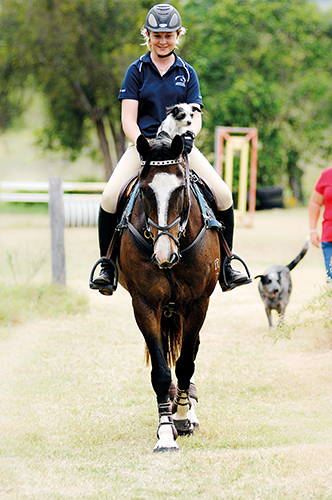
Art Uytendaal helped Guy refine his technique before his International debut, but when it came down to it, most of Guy’s education came from learning on the road, he took a ‘look and learn’ approach to riding, and made himself a success in order to survive.
This no fuss approach to riding is clearly etched into Gemma’s style, she’s tough and she will ride anything, and I mean anything, she even tried to get the family donkey over a fence: “It didn’t work,” she laughed, “He’s only good for weaning the foals, but I’d compete a Zebra if it could jump, as long as it’s talented, I don’t care what breed it is or what it looks like, anything looks good with a blue ribbon around its neck.”
This is why you’ll see her out on Thoroughbreds, Warmbloods, and Clydesdale crosses, she’s competed as many as 13 horses at one competition, and not only are they different types, but they range from five years old up to 15. In fact, the only thing they have in common is they’re successful.
I remember when I was covering the young rider selection event at Toowoomba last year, I could never find Gemma on her own two feet to interview her, she was always jumping from horse to horse, going from one class to another. You’d think this would be a daunting task for a young rider, but Gemma takes it all in her stride:
“Because I’ve always done that it just comes naturally, I don’t even notice it anymore. I just adjust myself to the horse I’m riding and the situation I’m in. That’s something I’ve learnt from Dad, you should always be calm while working with and around horses, I always try to work with them, not against them, that’s how to get the best out of them.”
Proof of this can be seen in a twelve-year-old Gemma competes called It’s Mitch (by Bao-lack out of a Clydesdale mare), who is owned, trained and competed in eventing by his owner, but given to Gemma for showjumping competitions: “If I waste time trying to change him, the competition will be over by the time I get organised. I don’t fight with him, I just try to get the best I can out of him at the time.”
The Creightons breed a few horses each year, also giving Gemma the opportunity to start a few horses her way, rather than adjusting to the older ones: “When bringing on the younger ones I like to work on them being rideable and quiet, so if they aren’t what I’m looking for, then they might be what someone else is looking for.”
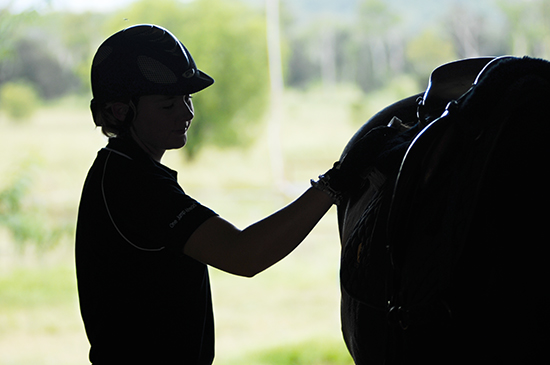 When it comes to breeding, Lena said they take a simple approach: “We’re not into the breeding in any great depth, we just want to breed something that’s quiet, and as long as it jumps, I don’t care what breed it is really. Ultimately though, they can’t all jump, so you don’t want to have some high-strung thing that looks beautiful but you can’t sell it to anybody because no one can ride it. So that’s why we’ve got a bit of Clydesdale in some of them, because they’re such nice people.”
When it comes to breeding, Lena said they take a simple approach: “We’re not into the breeding in any great depth, we just want to breed something that’s quiet, and as long as it jumps, I don’t care what breed it is really. Ultimately though, they can’t all jump, so you don’t want to have some high-strung thing that looks beautiful but you can’t sell it to anybody because no one can ride it. So that’s why we’ve got a bit of Clydesdale in some of them, because they’re such nice people.”
They also breed with the hope of uncovering a rare talent for Gemma. Lena said: “We’ll never be in the situation where we can buy one overseas or buy something that’s already had the work done. It would be great to have a horse to take her to an International level, but they’re worth so much money, we just do our best and take it one day at a time.”
With seven horses in her current competition team, Gemma singles out her winning mount from the Tekna series, Glenhaven Footloose by Close Encounters out of a Thoroughbred mare, as her favourite: “He’s not the easiest of horses to ride but he can jump. My grandparents bought him for me, they’ve been a big part of my riding career and they still ring me after every competition to see how I went.”
When it comes to Footloose, Gemma finds the best strategy is no strategy: “He’s impossible to make a plan of attack with, every time I ride him at home he acts like he’s never been in the arena before and he’s incredibly lazy. Then you take him to a show and he’s really hot, the complete opposite. So no matter what I work on with him at home it’s irrelevant to how I have to ride him at a competition, but I guess it keeps things interesting.”
Lena said she had her doubts when they first went to look at the horse: “Everyone knew he could jump, so when he came up for sale people swarmed like bees to honey, but no one bought him, so I knew something was up. Then after we bought him we heard all the stories. Lots of people looked at him but said he was too difficult, or that their kids weren’t capable of handling him, but I don’t think he’s anywhere near as naughty as what he was, he hasn’t had the chance to be.”
When it comes to fizzy horses, Gemma finds keeping them in a routine takes the edge off: “I just make sure I never take him for granted, I always keep him in work so he doesn’t have the chance to get fresh. It’s taken me a couple of shows to work out his little tricks, if you know what they’re like you can be ready for it and make sure you don’t give them any ammunition. The biggest thing is getting him into the ring, once you’re in the ring he’s on the job. He’s not a horse you can hang around on socialising, you don’t sit on his back and go through the course either.”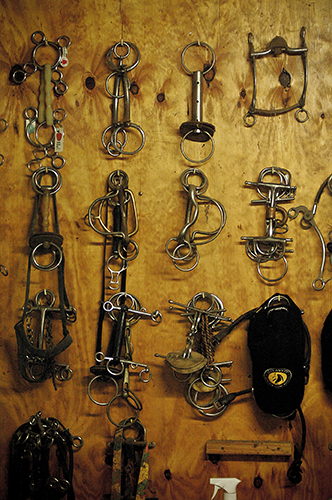
Taking on a difficult horse is what sets the serious riders apart from the crowd, and Gemma’s not one to back down from a challenge: “It makes you a better rider in the long run and when you actually achieve something it means a lot more, especially when everybody else put him in the too hard basket. The funny thing is he’s usually better in the ring when he’s on edge, because if there’s no atmosphere he’s as quiet as a mouse, he’ll jump beautiful rounds but he’ll be a bit flat and have something down. Where as at the big shows he’s more on edge and he’s sharper, he just jumps better.”
Gemma even had to look outside the box when it came to finding gear for Footloose: “He has such a small mouth that a normal bit hangs out the side of it, so we had to have one specially made for him.” Fortunately for Gemma, Guy has an obsession with bits: “I use a lot of Dad’s old gear and he’s known for his bit collection, he takes them everywhere with him, to clinics, to shows, he has a bit for everything.”
Besides an array of bits, Gemma has Stubben to thank for sponsoring her gear and Mitavite who sponsor her feed, without their support Lena said they wouldn’t have had the success they’ve had: “So much of this sport relies on a team and everyone from our feed man to our horse breaker is what helps it all come together.”
The Creighton team will continue touring the Australian show circuit and Gemma hopes to have another good year at the National Championships where she finished third and fourth overall last year. This was a relief after breaking her collarbone twice, in 2008 and 2009, before getting to ride in the final: “It made me even more determined to get through it but it doesn’t phase me, I’m always just thinking about what I have to do in the moment and then I get on with it.”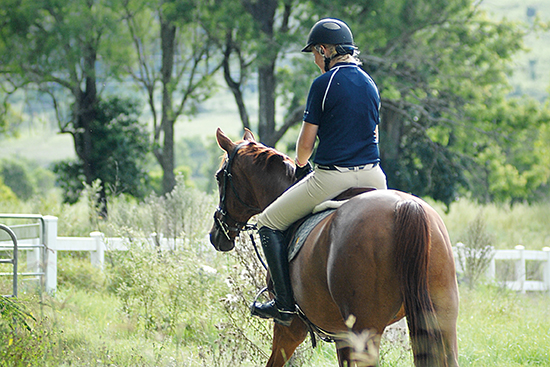
Now Gemma is finished school and riding full time she’s itching to turn 18 next year: “Then I’ll be old enough to ride on the World Cup circuit. I’m really looking forward to having a horse capable of that level and having a good enough partnership to be competitive.”
Although showjumping is an objective sport, with faults and speed determining the winner, the journey to the top involves a bit of luck. Like rubbing a rail that somehow stays up, escaping from a potentially serious injury, or being in the right place at the right time to score the ride on a talented horse. Fortunately for Gemma, she has all the qualities of the true Aussie athlete – she’s resilient, she gets on with the job and she has a deep respect for the horse, qualities that will tip chance in her favour. They just don’t make them like that anywhere else…
This article first appeared in the April 2011 issue of THM.

